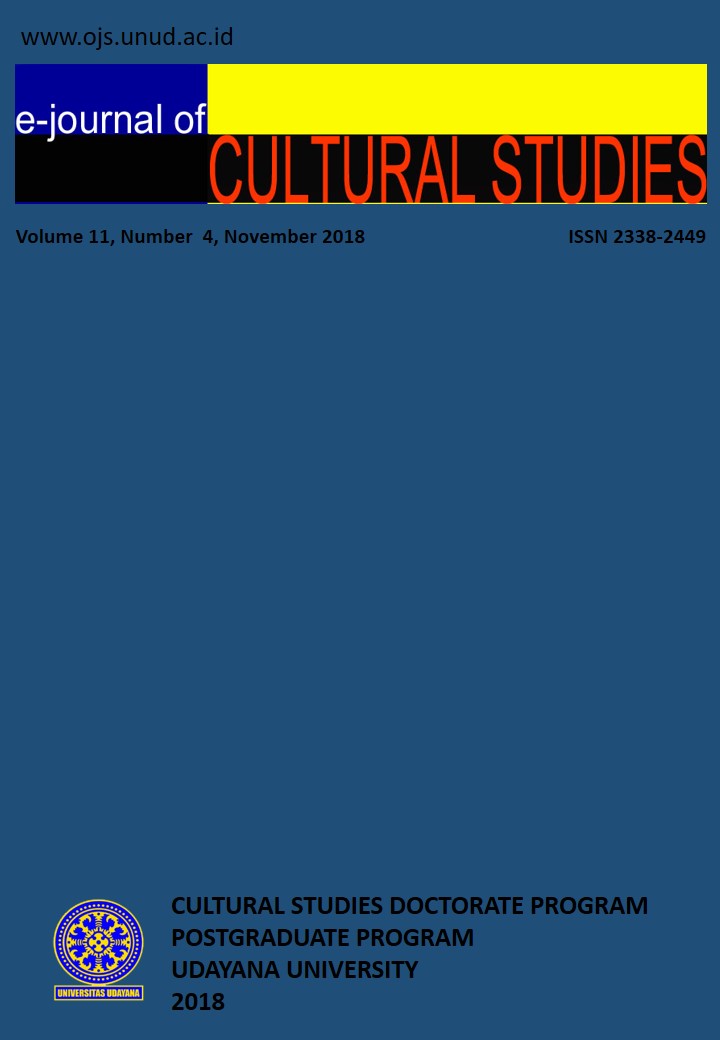STIGMATIZATION TOWARD TATTOOED BALINESE WOMEN IN DENPASAR
Abstract
The phenomenon of Tattooed Balinese Woman has been increasingly frequent in public spaces in Denpasar. Tattooed Balinese women want to convey or express their feelings through tattoo on their body, but this is not fully accepted by the society who has different judgement and perception encapsulated in what we call as Stigma. Stigma is viewed as a struggle between dominant and sub-cultural ideology within discourses which may cause marginalization and discrimination of tattooed Balinese woman psycho-socially and culturally. The research is aimed to faind out the forms and implications of stigmatization of tattooed Balinese woman in Denpasar. The data collection method uses observation technique, indepth interview, and document study. The data analysis adopts cultural study approach through reduction, reporting, and verification processes. The researcher uses Power-Knowledge Relation Theory, Stigma Theory, and Identity Theory as theoretical framework. The result of this research concludes that the form of the stigma of tattooed Balinese woman in Denpasar is labeling, stereotyping, separation and discrimination. The implication of the stigma is personal worthlessness and alienation, psychological instability, paradoxical attitudes in relationships and association, and sense of proving oneself as an expression of resistance against the stigma.
Keyword: stigma, Balinese Woman, Tattoo, resistance







